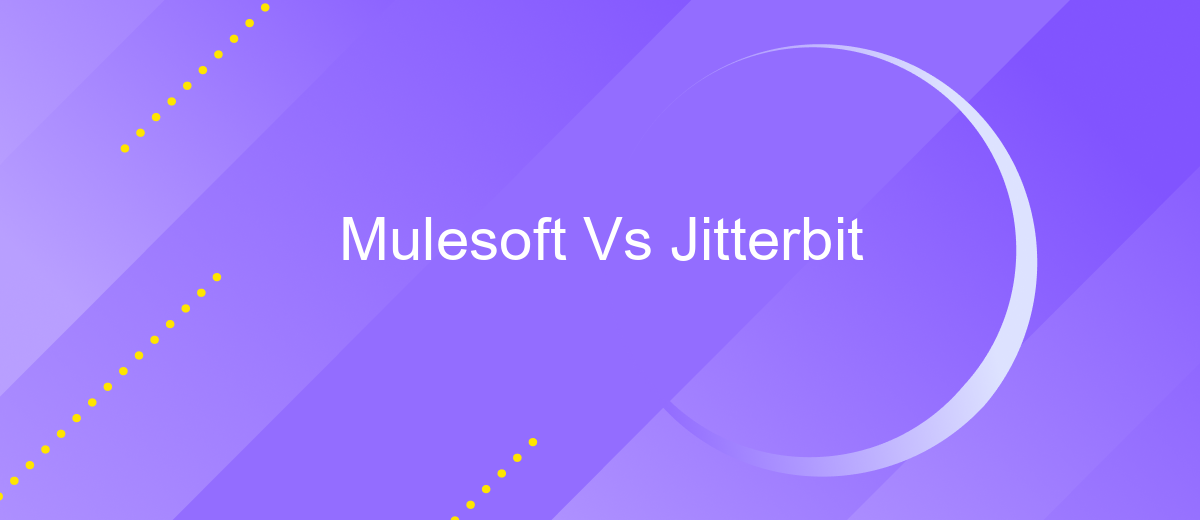Mulesoft Vs Jitterbit
In the rapidly evolving world of integration platforms, businesses often find themselves choosing between MuleSoft and Jitterbit. Both platforms offer robust solutions for connecting diverse systems, applications, and data sources. This article aims to provide a detailed comparison of MuleSoft and Jitterbit, exploring their features, strengths, and potential drawbacks to help you make an informed decision for your integration needs.
Introduction
In the ever-evolving landscape of digital transformation, businesses are increasingly relying on integration platforms to streamline their operations and enhance connectivity across various systems. Two prominent players in this domain are Mulesoft and Jitterbit. Both platforms offer robust solutions for API management, data integration, and workflow automation, but they also have distinct features and capabilities that set them apart.
- Mulesoft: Known for its comprehensive API-led connectivity approach, Mulesoft provides a unified platform for building, deploying, and managing APIs and integrations.
- Jitterbit: Focuses on simplifying the integration process with its intuitive design and user-friendly tools, making it accessible for businesses of all sizes.
Choosing the right integration platform is crucial for any organization looking to optimize its digital ecosystem. Platforms like Mulesoft and Jitterbit, along with versatile tools such as ApiX-Drive, enable businesses to seamlessly connect disparate systems, automate workflows, and drive efficiency. This article will delve into the key differences and advantages of Mulesoft and Jitterbit to help you make an informed decision.
Key Features Comparison

Mulesoft offers a robust platform for API-led connectivity, enabling seamless integration across various applications and data sources. It boasts features like Anypoint Platform, which provides a unified solution for API design, management, and analytics. Additionally, Mulesoft's DataWeave language simplifies data transformation, making it easier for developers to manipulate data between different formats. The platform also supports a wide range of connectors and pre-built templates, which significantly reduce the time required for integration projects.
Jitterbit, on the other hand, excels in its intuitive and user-friendly interface, which allows both technical and non-technical users to set up integrations effortlessly. Its Harmony platform offers powerful ETL (Extract, Transform, Load) capabilities and real-time data synchronization. Jitterbit's pre-built templates and connectors streamline the integration process, enabling faster deployment. For those looking for additional integration solutions, ApiX-Drive can be a valuable tool, offering easy-to-use automation for connecting various applications and services without extensive coding knowledge.
Pricing and Licensing

When comparing MuleSoft and Jitterbit, pricing and licensing are critical factors to consider. Both platforms offer flexible pricing models, but they cater to different business needs and scales.
- MuleSoft: MuleSoft operates on a subscription-based pricing model, which can be tailored to the specific requirements of the enterprise. Pricing varies depending on the number of users, integrations, and the level of support needed.
- Jitterbit: Jitterbit also offers a subscription-based pricing model, but it is generally more cost-effective for small to medium-sized businesses. The pricing is based on the number of endpoints and the volume of data processed.
For businesses looking for an alternative solution to streamline their integrations, ApiX-Drive offers a user-friendly platform with straightforward pricing. This service can be particularly beneficial for those seeking to automate workflows without the complexity associated with larger platforms. Ultimately, the choice between MuleSoft, Jitterbit, and other services like ApiX-Drive will depend on your specific integration needs and budget constraints.
Use Cases and Integrations

When it comes to use cases and integrations, both Mulesoft and Jitterbit offer robust solutions tailored to meet diverse business needs. Mulesoft excels in complex enterprise-level integrations, providing a comprehensive Anypoint Platform for API management and data integration. This makes it ideal for large organizations requiring extensive data orchestration and real-time analytics.
Jitterbit, on the other hand, is known for its user-friendly interface and rapid deployment capabilities, making it a preferred choice for small to medium-sized businesses. Its Harmony platform allows for quick and efficient integration of various applications, databases, and services, ensuring seamless data flow across systems.
- Mulesoft: Suitable for complex, large-scale enterprise integrations.
- Jitterbit: Ideal for SMBs needing quick, efficient integrations.
- ApiX-Drive: Facilitates easy integration setup without extensive coding.
Both platforms can be further enhanced by tools like ApiX-Drive, which simplifies the integration process by offering pre-built connectors and an intuitive interface. This allows businesses to connect various services and automate workflows without needing deep technical expertise, thereby optimizing operational efficiency.
Conclusion
In conclusion, both Mulesoft and Jitterbit offer robust solutions for integration needs, each with its own set of strengths. Mulesoft excels in providing a comprehensive, enterprise-grade platform with extensive API management capabilities, making it suitable for large-scale, complex integrations. On the other hand, Jitterbit stands out for its user-friendly interface and rapid deployment, making it an attractive option for businesses seeking quick and efficient integration solutions.
When choosing between these two, it is essential to consider your specific business requirements, technical expertise, and budget. Additionally, leveraging services like ApiX-Drive can further simplify the integration process by offering pre-built connectors and automated workflows, thus enhancing the overall efficiency and effectiveness of your integration strategy. Ultimately, the right choice will depend on aligning the tool's capabilities with your organizational goals and integration needs.
FAQ
What are the main differences between MuleSoft and Jitterbit?
Which platform is more cost-effective?
How do MuleSoft and Jitterbit handle API management?
Can I integrate both platforms with my existing systems?
Are there services available to help implement and configure these platforms?
Strive to take your business to the next level, achieve your goals faster and more efficiently? Apix-Drive is your reliable assistant for these tasks. An online service and application connector will help you automate key business processes and get rid of the routine. You and your employees will free up time for important core tasks. Try Apix-Drive features for free to see the effectiveness of the online connector for yourself.

